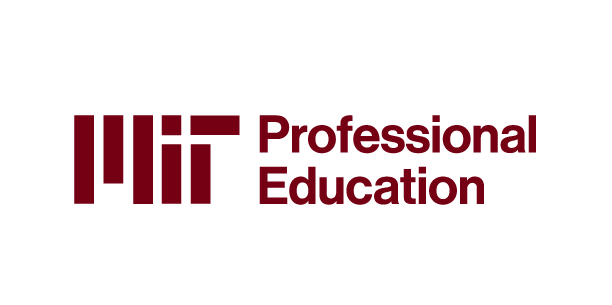- Great Learning
- Free Courses
- Machine Learning
Earn a certificate & get recognized
Supervised Machine Learning with Logistic Regression and Naïve Bayes
Learn supervised machine learning with logistic regression and Naïve Bayes. Enroll in our free course to gain essential skills and knowledge to take your understanding of these algorithms to the next level.
Instructor:
Ms. Sampriti ChatterjeeSupervised Machine Learning with Logistic Regression and Naïve Bayes
21.7K+ learners enrolled so far
Stand out with an industry-recognized certificate
10,000+ certificates claimed, get yours today!
Get noticed by top recruiters
Share on professional channels
Globally recognised
Land your dream job

Skills you will gain
Scikit Learn Library
Logistic Regression
Naïve Bayes
Key Highlights
Get free course content
Master in-demand skills & tools
Test your skills with quizzes
About this course
In this course, we will cover the fundamentals of supervised machine learning and dive deeper into two popular algorithms: logistic regression and Naïve Bayes.
We will start with an overview of supervised learning and explore the key concepts and terminology used in this area of machine learning. From there, we will delve into logistic regression and learn how to apply this algorithm to binary classification problems. We will also cover evaluation metrics and techniques to improve model performance. Next, we will move on to Naïve Bayes, a probabilistic classifier that is widely used in text classification and spam filtering. We will learn how to implement Naïve Bayes and how to interpret the results.
Throughout the course, we will provide practical examples and case studies to help you understand the real-world applications of these algorithms. By the end of this course, you will have a solid understanding of supervised machine learning with logistic regression and Naïve Bayes, and the skills to apply them to your own projects. So, what are you waiting for? Enroll now and start your learning journey today!
Great Learning has collaborated with the top universities, like the University of Texas at Austin and SRM Institute of Science and Technology, and designed the best AIML Courses in India. Top-class professors have prepared an exhaustive and comprehensive curriculum to provide a world-class education for you to develop advanced skills in the AIML online course. Also, receive personalized mentorship from industry experts who are working at top companies.
Check out our PG Course in Machine learning Today.
Course outline
What is Machine Learning?
This module begins by defining machine learning. It then discusses how a machine understands the tasks with examples and explains supervised and unsupervised learning concepts in machine learning.
What is Supervised Learning?
This module explains what is Supervised Learning and two types of Supervised Learning that is Regression and Classification.
What is Logistic Regression?
This module highlights Logistic Regresion which is also a part of Supervised Learning Classification Algorithm.
Demo on Logistic Regression
This module showcases a demo on logistic regression with a real world example of Credit Card Fraud.
What is Naive Bayes?
This module elaborates on Naive Bayes classification which is a part of Supervised Learning.
Demo on Naive Bayes
This module showcases a demo on Naive Bayes with a real world example of Diabetic Prediction on Pima Indians Diabetes Database.
Get access to the complete curriculum once you enroll in the course
Stand out with an industry-recognized certificate
10,000+ certificates claimed, get yours today!
Get noticed by top recruiters
Share on professional channels
Globally recognised
Land your dream job

Supervised Machine Learning with Logistic Regression and Naïve Bayes

3.0 Hours
Beginner
21.7K+ learners enrolled so far
Get free course content
Master in-demand skills & tools
Test your skills with quizzes
Learner reviews of the Free Courses
5.0

5.0
4.0

5.0
What our learners enjoyed the most
Skill & tools
64% of learners found all the desired skills & tools
Our course instructor

Ms. Sampriti Chatterjee
Machine Learning Expert
Frequently Asked Questions
Will I receive a certificate upon completing this free course?
Is this course free?
What is supervised machine learning with example?
Supervised machine learning is a type of machine learning in which machines are trained using well-labeled training data and then predict the output based on that data. The labeled data indicates that some of the input data have already been tagged with the appropriate output.
Supervised learning can be applied in the real world for topics like risk assessment, image classification, fraud detection, spam filtering, and so forth.
What is difference between supervised and unsupervised machine learning?
Supervised learning is a machine learning technique that involves training models with labeled data. Models in supervised learning must discover a mapping function to connect the input variable (X) to the output variable (Y) (Y).
To train the model, supervised learning requires supervision, like how a student learns in the presence of a teacher. There are two types of problems that can be solved with supervised learning: classification and regression.
Unsupervised learning is another machine learning method that uses unlabeled input data to discover patterns. Unsupervised learning aims to extract structure and patterns from unstructured data. There is no need for monitoring when learning unsupervised. Instead, it searches the data for patterns on its own.
Why is supervised machine learning important?
Data is turned into meaningful, actionable insights with the use of supervised machine learning. It allows businesses to use data to better understand and prevent undesirable consequences while also increasing desired outcomes for their target variable.
Become a Skilled Professional with Pro Courses
Gain work-ready skills with guided projects, top faculty and AI tools, all at an affordable price.


View Course

Included with Pro+ Subscription

View Course

Included with Pro+ Subscription

View Course

Included with Pro+ Subscription


View Course

Included with Pro+ Subscription

View Course

Included with Pro+ Subscription


View Course

Included with Pro+ Subscription

View Course

Included with Pro+ Subscription
.jpg)
View Course

Included with Pro+ Subscription


View Course

Included with Pro+ Subscription


View Course

Included with Pro+ Subscription




View Course

Included with Pro+ Subscription


View Course

Included with Pro+ Subscription


View Course

Included with Pro+ Subscription
.png)
View Course

Included with Pro+ Subscription

View Course

Included with Pro+ Subscription

View Course

Included with Pro+ Subscription

View Course

Included with Pro+ Subscription


View Course

Included with Pro+ Subscription

View Course

Included with Pro+ Subscription


View Course

Included with Pro+ Subscription




View Course

Included with Pro+ Subscription


View Course

Included with Pro+ Subscription
.png)

.jpg)

.jpg)

.png)
View Course

Included with Pro+ Subscription
.png)
View Course

Included with Pro+ Subscription
.png)
View Course

Included with Pro+ Subscription

View Course

Included with Pro+ Subscription

View Course

Included with Pro+ Subscription


View Course

Included with Pro+ Subscription
.jpg)
View Course

Included with Pro+ Subscription

View Course

Included with Pro+ Subscription
.png)
View Course

Included with Pro+ Subscription

View Course

Included with Pro+ Subscription
.png)
View Course

Included with Pro+ Subscription

View Course

Included with Pro+ Subscription

View Course

Included with Pro+ Subscription
.jpeg)
View Course

Included with Pro+ Subscription
.jpg)
View Course

Included with Pro+ Subscription
.jpg)
View Course

Included with Pro+ Subscription

View Course

Included with Pro+ Subscription

View Course

Included with Pro+ Subscription
.png)
View Course

Included with Pro+ Subscription
.png)
View Course

Included with Pro+ Subscription
.png)
View Course

Included with Pro+ Subscription


View Course

Included with Pro+ Subscription

View Course

Included with Pro+ Subscription

View Course

Included with Pro+ Subscription
.jpg)
View Course

Included with Pro+ Subscription

View Course

Included with Pro+ Subscription

View Course

Included with Pro+ Subscription


Popular


View Course

Included with Pro+ Subscription

View Course

Included with Pro+ Subscription

View Course

Included with Pro+ Subscription


View Course

Included with Pro+ Subscription

View Course

Included with Pro+ Subscription


View Course

Included with Pro+ Subscription

View Course

Included with Pro+ Subscription
.jpg)
View Course

Included with Pro+ Subscription
Microsoft Courses


View Course

Included with Pro+ Subscription


View Course

Included with Pro+ Subscription




View Course

Included with Pro+ Subscription


View Course

Included with Pro+ Subscription


View Course

Included with Pro+ Subscription
Data Science & ML
.png)
View Course

Included with Pro+ Subscription

View Course

Included with Pro+ Subscription

View Course

Included with Pro+ Subscription

View Course

Included with Pro+ Subscription


View Course

Included with Pro+ Subscription

View Course

Included with Pro+ Subscription
Cloud Computing


View Course

Included with Pro+ Subscription




View Course

Included with Pro+ Subscription


View Course

Included with Pro+ Subscription
.png)

.jpg)

.jpg)



View Course

Included with Pro+ Subscription
.png)
View Course

Included with Pro+ Subscription




View Course

Included with Pro+ Subscription
.png)

View Course

Included with Pro+ Subscription
.png)

View Course

Included with Pro+ Subscription
IT & Software
.png)
View Course

Included with Pro+ Subscription
.png)
View Course

Included with Pro+ Subscription
.png)
View Course

Included with Pro+ Subscription

View Course

Included with Pro+ Subscription

View Course

Included with Pro+ Subscription


View Course

Included with Pro+ Subscription
.jpg)
View Course

Included with Pro+ Subscription

View Course

Included with Pro+ Subscription

View Course

Included with Pro+ Subscription

View Course

Included with Pro+ Subscription

View Course

Included with Pro+ Subscription

View Course

Included with Pro+ Subscription


View Course

Included with Pro+ Subscription

View Course

Included with Pro+ Subscription


View Course

Included with Pro+ Subscription

View Course

Included with Pro+ Subscription

View Course

Included with Pro+ Subscription

View Course

Included with Pro+ Subscription

View Course

Included with Pro+ Subscription
 (1).png)
View Course

Included with Pro+ Subscription

View Course

Included with Pro+ Subscription
Management
.png)
View Course

Included with Pro+ Subscription

View Course

Included with Pro+ Subscription
.png)
View Course

Included with Pro+ Subscription

View Course

Included with Pro+ Subscription

View Course

Included with Pro+ Subscription
.jpeg)
View Course

Included with Pro+ Subscription
.jpg)
View Course

Included with Pro+ Subscription
.jpg)
View Course

Included with Pro+ Subscription

View Course

Included with Pro+ Subscription
.jpg)
View Course

Included with Pro+ Subscription
.png)
View Course

Included with Pro+ Subscription

View Course

Included with Pro+ Subscription
 (1).jpg)
View Course

Included with Pro+ Subscription
.png)
View Course

Included with Pro+ Subscription
.png)
View Course

Included with Pro+ Subscription
.png)
View Course

Included with Pro+ Subscription
Cyber Security

View Course

Included with Pro+ Subscription

View Course

Included with Pro+ Subscription
.png)
View Course

Included with Pro+ Subscription
.png)
View Course

Included with Pro+ Subscription
.png)
View Course

Included with Pro+ Subscription
AI & Generative AI


View Course

Included with Pro+ Subscription

View Course

Included with Pro+ Subscription

View Course

Included with Pro+ Subscription
.jpg)
View Course

Included with Pro+ Subscription

View Course

Included with Pro+ Subscription

View Course

Included with Pro+ Subscription


Subscribe to Academy Pro+ & get exclusive features
$25/month
No credit card required

Learn from 40+ Pro courses

Access 500+ certificates for free

700+ Practice exercises & guided projects

Prep with AI mock interviews & resume builder
Recommended Free Machine Learning courses



Similar courses you might like




Related Machine Learning Courses
-
Personalized Recommendations
Placement assistance
Personalized mentorship
Detailed curriculum
Learn from world-class faculties
50% Average salary hike -


Johns Hopkins University
Certificate Program in AI Business Strategy10 weeks · Online
Know More
-


Walsh College
MS in Artificial Intelligence & Machine Learning2 Years · Online
Know More
-


MIT Professional Education
No Code AI and Machine Learning: Building Data Science Solutions12 Weeks · Online · Weekend
Learn from MIT FacultyKnow More












